


WILLIAM I 1066 - 1087 (W1) Lived c1028 -
1087
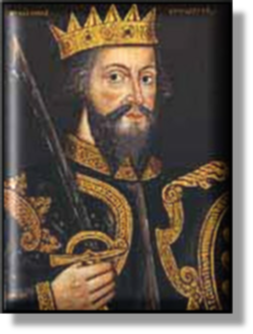 xxxxxWilliam “The Conqueror” came to the throne by conquest,
defeating the Anglo-Saxon King, Harold
II, at the famous Battle of Hastings. He
marched directly to London, leaving a trail of death and destruction
in his wake to subdue the natives, and was crowned king in
Westminster Abbey on Christmas Day 1066. Hex
was a cousin of King Edward the Confessor and claimed that Edward had promised him succession to
the English throne in 1051. So when Harold Godwin took the throne as
Harold II in
January 1066, William decided to invade England and take his
kingdom.
xxxxxWilliam “The Conqueror” came to the throne by conquest,
defeating the Anglo-Saxon King, Harold
II, at the famous Battle of Hastings. He
marched directly to London, leaving a trail of death and destruction
in his wake to subdue the natives, and was crowned king in
Westminster Abbey on Christmas Day 1066. Hex
was a cousin of King Edward the Confessor and claimed that Edward had promised him succession to
the English throne in 1051. So when Harold Godwin took the throne as
Harold II in
January 1066, William decided to invade England and take his
kingdom.
xxxxxAfter winning the Battle of
Hastings - in which Harold was killed - he set about the
conquest of England, a task virtually completed after ruthlessly
crushing a revolt in the north in 1069, and overcoming the
resistance of Hereward the Wake in 1071. During these five years he
swept aside Anglo-Saxon rule and introduced the Norman feudal
system, centralising government under the crown and giving out the
big estates and high government offices to leading Norman knights
and churchmen. By the mid-80s the Anglo Saxon leaders in
England had been almost entirely replaced by a new ruling élite
which was staunchly loyal to William. And William and his followers
firmly established their rule and military occupation by the
building of a string of imposing castles throughout the land.
xxxxxIt must be said that Norman rule gave England the
stability it badly needed. It also had an important influence on
English culture - introducing as it did the new language of
Norman French and the distinctive Norman architecture, known as Romanesque. Many French craftsmen and
traders came to settle in England.
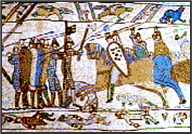
xxxxxBut for most of us, his
reign is remembered for two things; the Domesday Book, a survey of England,
ordered by him for the levying of taxes, and the Bayeux Tapestry, a pictorial record of
that famous and eventful battle of 1066 and all that.
xxxxxWilliam was the
illegitimate son of Duke Robert the Devil, and became Duke of
Normandy on the death of his father in 1035 at the age of eight. By
the time he was twenty he had proved himself an accomplished
soldier, having defended his land against a number of rebellions. As
his reign in England showed, he was a firm believer in law and order
and a sincerely religious man, upholding the "Truce of God", a ban
on fighting imposed by the Church on certain holy days. The Anglo-Saxon
Chronicle - a record of the times - describes him as "a
very wise and powerful man".
xxxxxWilliam died in Rouen in 1087
following a fall from his horse, and he was buried at Caen. He left
Normandy to his eldest son Robert and England to his second son,
William Rufus.
xxxxxIncidentally,
the coat of arms shown below (two lions passant on a red flag) are
those of William the Conqueror at the time of his invasion.
SEE BELOW
FOR MAP OF EUROPE AT THIS TIME

W1-1066-1087-W1-1066-1087-W1-1066-1087-W1-1066-1087-W1-1066-1087-W1-1066-1087-W1
Acknowledgements
William I: c1620, artist
unknown - National Portrait Gallery, London. Map
(Europe): licensed under Creative Commons. User: Roke – commons
wiki. Coat of Arms: licensed under
Creative Commons. Author: Sodacan – creativecommons.org,
wikimedia.org.
|
1066
|
William, Duke of
Normandy, invades southern England and defeats and kills the
Anglo-Saxon King, Harold, at the
famous Battle
of Hastings.
|
|
1067
|
Having been crowned king of England at
Westminster Abbey, London, on Christmas Day 1066, William begins
the Norman Conquest,
not fully completed until the early 1080s.
|
|
1069
|
Resistance begins to grow across the
country. William starts building a fortress at Windsor, the
first of some 80 castles
built across his new kingdom over the next twenty-five
years.
A serious rebellion breaks out in
Northumbria, supported by a Danish invasion force. It is swiftly
and ruthlessly crushed by what becomes known as The Harrowing of the North.
|
|
1070
|
An English landowner, Hereward the Wake, rebels against the Normans
from his stronghold on the Isle of Ely. He has some success, but
is defeated the following year.
The Italian Lanfranc,
moral reformer and advisor to the King, is appointed Archbishop
of Canterbury and begins a thorough reorganisation of the
English Catholic Church.
|
|
1071
|
  The
Seljuk Turks,
now at the height of their
power, overrun Anatolia and, after defeating the Byzantines at
the Battle of Manzikert, take control of the Holy City of
Jerusalem. The
Seljuk Turks,
now at the height of their
power, overrun Anatolia and, after defeating the Byzantines at
the Battle of Manzikert, take control of the Holy City of
Jerusalem.
|
|
1072
|
The Norman adventurer Robert Guiscard lays the foundation of the Norman kingdom of Sicily by attacking the
Byzantines in southern Italy and the Muslims on the island.
|
|
1075
|
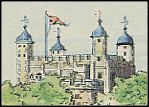 A
bitter dispute breaks out between Pope Gregory VII and the
German King, Henry IV. Known as the
Investiture Controversy, it is a power struggle between Church
and State. A
bitter dispute breaks out between Pope Gregory VII and the
German King, Henry IV. Known as the
Investiture Controversy, it is a power struggle between Church
and State.
Work begins on the Tower of London, a fortress on the Thames
designed to defend the entrance to the busy port or Pool of
London.
|
|
1076
|
Having settled in Morocco, the Almoravids, a nomadic people from the Western
Sahara, overrun the wealthy Kingdom of Ghana and prepare for an
invasion of Spain, successfully carried out in 1086.
|
|
1077
|
The Bayeux
Tapestry, a pictorial record of the Norman invasion and
the Battle of Hastings, is possibly completed this year, in time
for the dedication of Bayeux Cathedral.
|
|
1083
|
Aided by assistants, the Chinese
scholar and statesman Sima
Guang completes his epic history of China, a mammoth
record of events covering over thirteen hundred years.
|
|
1084
|
St Bruno of Cologne
founds the Carthusian
Order at Chartreuse, near Grenoble, in
southern France. The order is based on rules of severe
austerity
|
|
1086
|
 Domesday Book
is completed. A detailed survey of England
for the assessment of tax, it is regarded as the greatest
public record produced in medieval Europe. Domesday Book
is completed. A detailed survey of England
for the assessment of tax, it is regarded as the greatest
public record produced in medieval Europe.
|
|
|
The Almoravids of North Africa cross into
Spain and quickly gain ground. Alfonso
VI of Castile, having just taken Toledo from the Moors, is
defeated at the Battle of Zalaca.
|
|
1087
|
The King dies at Rouen after falling
from his horse. He is buried at Caen. He is succeeded to the
English throne by his son William
II, known as William Rufus because of his red hair.
|
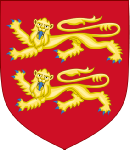


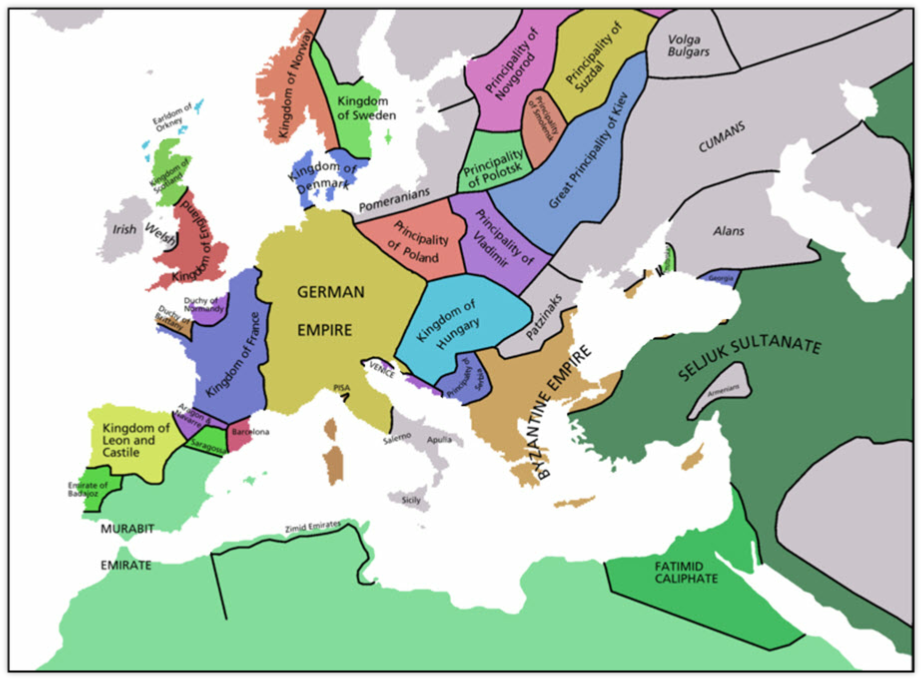




Timewise Traveller is a free
non-profit resource. However, if you have found it of
interest/value, and would like to show your appreciation, the author
would welcome any contribution to Cancer Research UK.
To visit our Cancer Research
page and make a small donation, click 












 xxxxx
xxxxx

 The
The
 A
bitter dispute breaks out between Pope
A
bitter dispute breaks out between Pope
